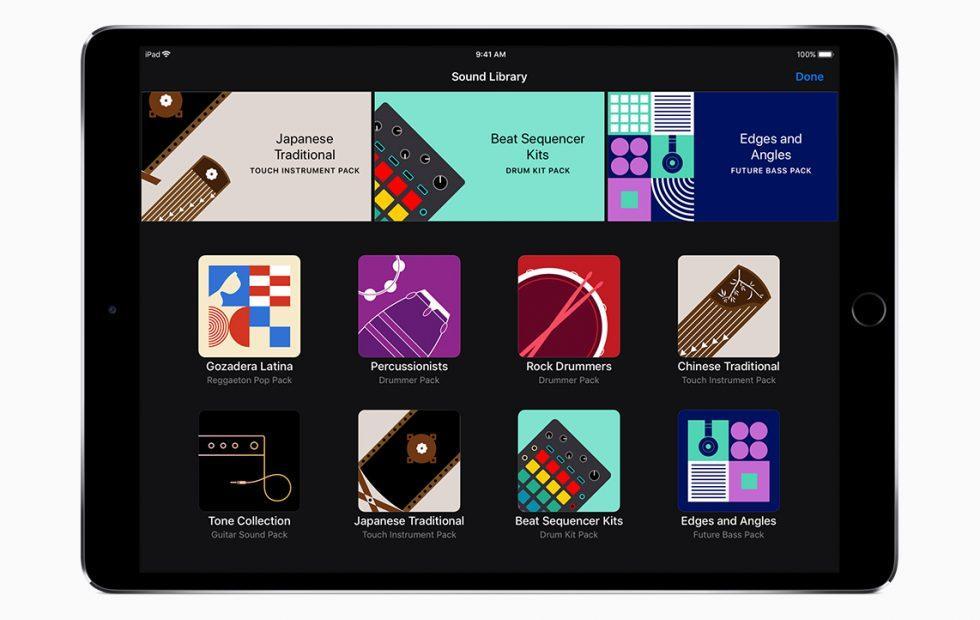Set Up Keyboards To record a MIDI keyboard, plug the iRig MIDI or Camera Connection Kit into your iOS device, then connect that to your keyboard. You many need a powered USB hub. Open GarageBand. Mar 09, 2011 GarageBand turns your iPad, and iPhone into a collection of Touch Instruments and a full-featured recording studio — so you can make music anywhere you go. And with Live Loops, it makes it easy for anyone to have fun creating music like a DJ. Use Multi-Touch gestures to play keyboards, guitars, and create beats.
GarageBand ’11 includes a Songwriting project (also available from the top-level New Project dialog). When you choose the Songwriting project, GarageBand presents you with a full set of four instrument tracks, plus a real instrument track for your voice. You’re instantly ready to start adding loops and recording your own voice!
You might notice two problems with your GarageBand window:
There’s no keyboard. You can record the contents of a software instrument track by “playing” the keyboard, clicking the keys with your trackpad. (As you might imagine, this isn’t the best solution.)
If you’re a musician, the best method of recording your own notes is with a MIDI instrument. For now, you can display the keyboard window by pressing Command+K. If the keyboard window is on the screen and you don’t need it, banish the window by clicking the Close button.
Even if you’re not interested in the “point-and-click” keyboard, GarageBand offers a musical typing keyboard, where you press the keys on your keyboard to simulate the keys on a musical keyboard. To display the musical typing keyboard window, press Shift+Command+K.
The example song has only one track. If you want to write the next classical masterpiece for Grand Piano, that’s fine. Otherwise, on the GarageBand menu bar, choose Track→Delete Track to start with a clean slate.
These are the five kinds of tracks you can use in GarageBand ’11:
Software instrument tracks: These tracks aren’t audio recordings. Rather, they’re mathematically precise algorithms that your Mac renders (or builds) to fit your needs. If you have a MIDI instrument connected to your Mac, you can create your own software instrument tracks.
Real instrument tracks: A real instrument track is an actual audio recording, such as your voice or a physical instrument without a MIDI connection. (Think microphone.)
Electric Guitar tracks: GarageBand includes a real instrument track especially made for an electric guitar, which allows you to use one of five different amplifiers and a number of stompboxes (those effect pedals that guitarists are always poking with their foot to change the sound of their instruments).
Podcast artwork track: You get only one of these; they hold photos that will appear on a video-capable iPod, iPhone, or iPad (or a window on your iWeb site) when your podcast is playing.
Video tracks: The video sound track appears if you’re scoring (adding music) to an iMovie movie. Along with the video sound track, you get a cool companion video track that shows the clips in your movie.
To add a software instrument track of your very own, follow these steps:
How To Get More Instruments On Garageband Ipad

Garageband Ipad Tutorial
Click the New Track button (which carries a plus sign).
GarageBand displays the New Track dialog.
Click the Software Instrument icon and then click Create.
See all those great instruments in the Track Info pane on the right?
Choose the general instrument category by clicking it.
From the right column, choose your specific style of weapon, such as Rock Kit for an arena sound.
If you’re creating a podcast and you want to add a series of still images that will appear on a device’s screen (or on your iWeb page), follow these steps:
Garageband For Ipad Air
Click the View Media Browser button.
Click the Photos button.
GarageBand displays all the photos in your iPhoto library and Events.
Drag an image from your iPhoto library in the media browser to the Track list.
The Podcast track appears at the top of the Track list, and you can add and move images in the list at any time, just like the loops that you add to your instrument tracks.